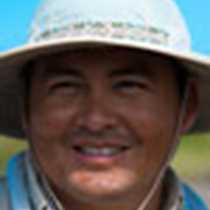Our journey continues on the island where the well-known naturalist Charles Darwin collected the largest specimen collection while visiting the Galapagos Archipelago in 1835.
Our morning outing took place on a golden beach known as Espumilla. Early risers joined us for kayaking and walking along the coast of Santiago Island. Hundreds of ghost crabs looking for organic material were sighted on the peaceful beach. Blue-footed boobies, pelicans and other opportunistic birds delighted us in a feeding frenzy near the coastline. The first taste of Santiago was just the beginning of a mesmerizing day.
Later in the morning we had other alternatives to explore the wonder of Santiago island. Snorkeling was impressive due to the mosaic of species found in the warm water of Buccaneer Cove. Sea lions, eagle rays, sharks, sea turtles and a variety of fish pleased the snorkelers, while blue-footed boobies and pelicans tried to catch black stripe salemas that were throughout the shallow area. Others were entertained by seabirds perched on rocks and surprised by the unique scenery that characterize Buccaneer Cove.
In the afternoon we anchored in a place that once was inhabited by salt miners. Currently, the island is a national park and through the conservation efforts of Lindblad Expedition and National Geographic this place is recovering the natural flora and fauna that for a long time was devastated by invasive species such as goats and pigs.
Young explorers enjoyed the black sand beach an hour before the rest of us went ashore for a peaceful hike along the intertidal zone of Santiago Island. Both options pleased our guests. Hikers enjoined their walk among marine iguanas, Galapagos fur seals and migratory birds while youngsters on the beach played and built sand castles. This magical day ended with an impressive sunset that enchanted our guests.







